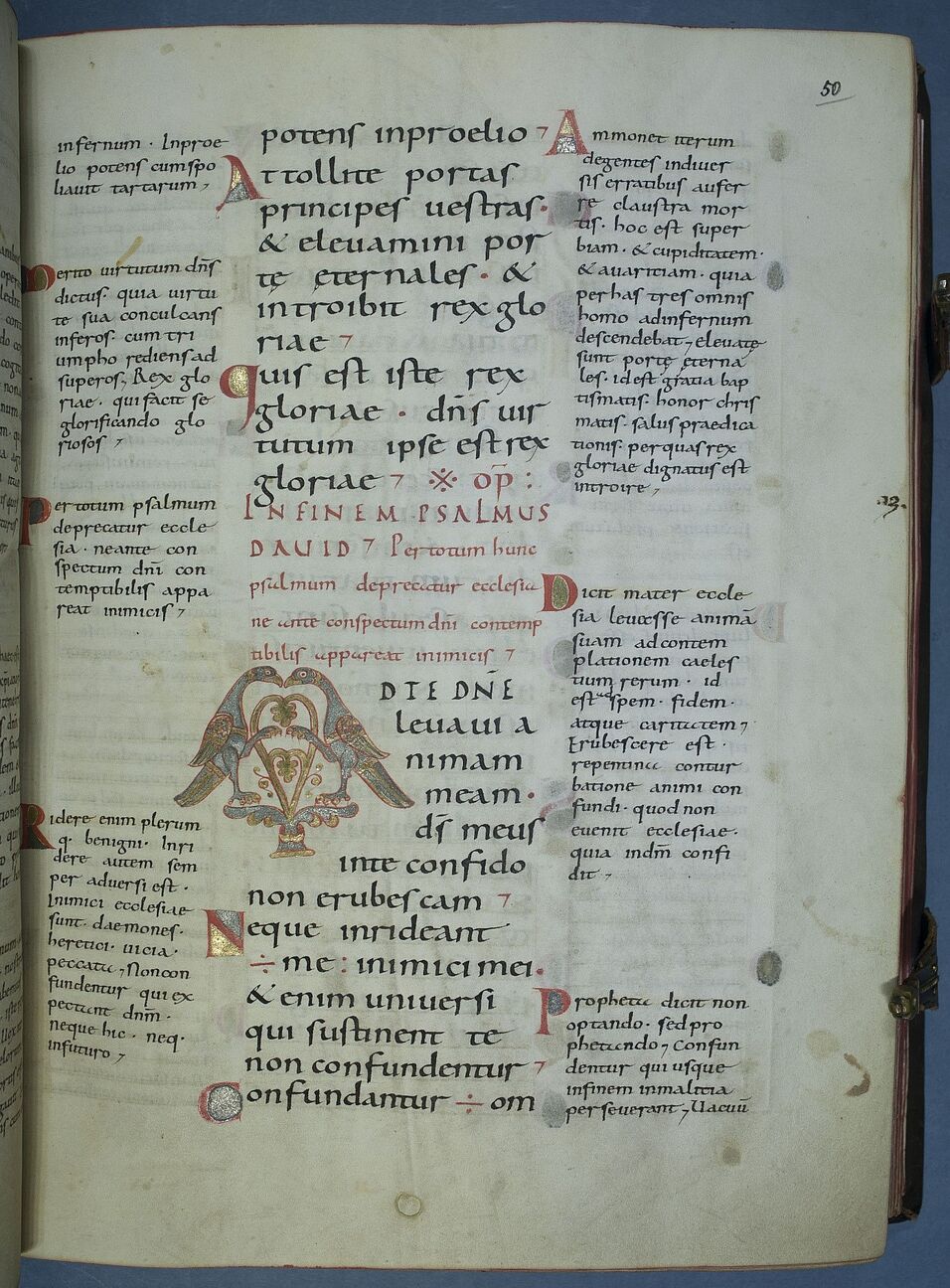"Margins at the Centre: Book Production and Practices of Annotation in the East Frankish Realm (830-900)" ist der Titel eines vierjährigen, vom FWF finanzierten Forschungsprojekts, das im vorigen Jänner startete und mich bis Ende 2024 beschäftigen wird. In meinem Vortrag bei "Forum Millennium" werde ich mein Vorhaben, die heranzuziehenden Quellen sowie erste Beobachtungen präsentieren.
Ziel meiner Arbeit ist zu untersuchen, wie die lateinische Grammatik und die Bibel im Ostfränkischen Reich erklärt wurden, das heißt in einer Region, wo Latein eine Fremdsprache war und die Beschäftigung mit der lateinischen Bibel vergleichsweise schwerer als anderswo im karolingischen Imperium fiel. Dank der tiefgründigen Arbeit von Germanisten wissen wir, dass ostfränkische Gelehrte die Schwierigkeiten ihres Publikums sehr wohl berücksichtigten, indem sie Glossen und Werke auf Althochdeutsch verfassten. Es bleibt zu überprüfen, ob auch ihre bei weitem umfangreichere Interpretationstätigkeit auf Latein die besonderen Ansprüche ostfränkischer Schüler und Leser in Betracht zog. Im Zentrum meiner Untersuchungen stehen daher zahlreiche Randnotizen auf Latein, mit welchen karolingische Gelehrte bestimmte Grammatik- und Bibelhandschriften im Laufe des neunten Jahrhunderts versahen. Marginalannotationen auf Latein bieten ein hervorragendes, bislang aber meistens vernachlässigtes Quellenmaterial, um Eigenschaften und Schwerpunkte des Studiums von Latein und der Bibel zu rekonstruieren.
Konkret werde ich mich mit zwei Gruppen von Quellen beschäftigen: Einerseits mit den Glossen zu Priscians Institutiones Grammaticae aus dem Kloster Wissembourg, die die lokalen Schwerpunkte beim Lateinunterricht in der zweiten Hälfte des neunten Jahrhunderts zeigen. Andererseits mit den sogenannten "kommentierten Ausgaben" der Bibel, jenen Bibelhandschriften, die sogleich mit einem umfangreichen Korpus an Marginalerklärungen versehen wurden, noch bevor sie das Skriptorium verließen. Solche kommentierte Bibelausgaben, die mit der Verbreitung der sogenannten Glossa Ordinaria ab dem 11. Jahrhundert in Westeuropa allgegenwärtig waren, wurden schon in früheren Jahrhunderten und auffallend häufig im Ostfränkischen Reich um 850 herum produziert. Durch die detaillierte Untersuchung von Inhalten und Funktion der Erklärungen möchte ich überprüfen, ob die kommentierten Ausgaben der Bibel als ein "Sonderprodukt" des östlichen Teils des karolingischen Imperiums betrachtet werden können, welches als Lateinisches Pendant zu den althochdeutschen Glossen gelten kann.
Cinzia Grifoni, ÖAW

